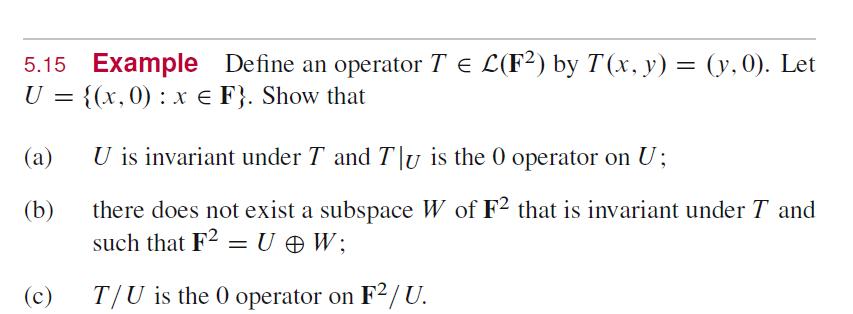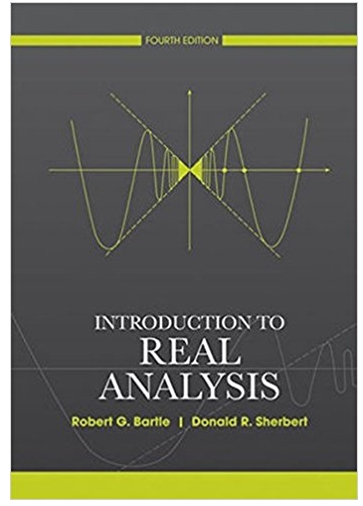Question
5.15 Example Define an operator T = L(F2) by T(x, y) = (y,0). Let U = {(x,0): x F}. Show that (a) (b) (c)

5.15 Example Define an operator T = L(F2) by T(x, y) = (y,0). Let U = {(x,0): x F}. Show that (a) (b) (c) U is invariant under T and Tlu is the 0 operator on U; there does not exist a subspace W of F2 that is invariant under T and such that F2 = U+W; T/U is the 0 operator on F2/U.
Step by Step Solution
There are 3 Steps involved in it
Step: 1
Ans Sodium carbonate Calcium carbonate Solution A salt is a compound for...
Get Instant Access to Expert-Tailored Solutions
See step-by-step solutions with expert insights and AI powered tools for academic success
Step: 2

Step: 3

Ace Your Homework with AI
Get the answers you need in no time with our AI-driven, step-by-step assistance
Get StartedRecommended Textbook for
Introduction to Real Analysis
Authors: Robert G. Bartle, Donald R. Sherbert
4th edition
471433314, 978-1118135853, 1118135857, 978-1118135860, 1118135865, 978-0471433316
Students also viewed these Accounting questions
Question
Answered: 1 week ago
Question
Answered: 1 week ago
Question
Answered: 1 week ago
Question
Answered: 1 week ago
Question
Answered: 1 week ago
Question
Answered: 1 week ago
Question
Answered: 1 week ago
Question
Answered: 1 week ago
Question
Answered: 1 week ago
Question
Answered: 1 week ago
Question
Answered: 1 week ago
Question
Answered: 1 week ago
Question
Answered: 1 week ago
Question
Answered: 1 week ago
Question
Answered: 1 week ago
Question
Answered: 1 week ago
Question
Answered: 1 week ago
Question
Answered: 1 week ago
Question
Answered: 1 week ago
Question
Answered: 1 week ago
Question
Answered: 1 week ago
View Answer in SolutionInn App



